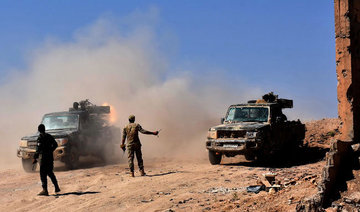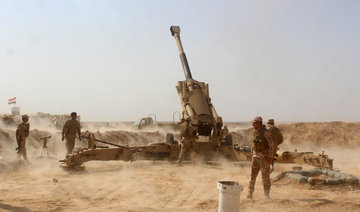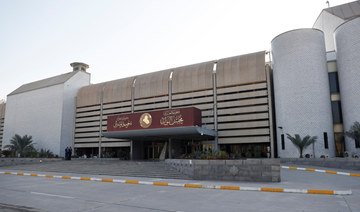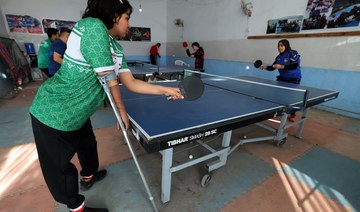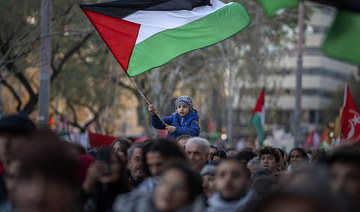ALEPPO: Flicking through before-and-after photos of Aleppo’s Umayyad mosque on his phone, the city’s Mufti Mahmoud Akkam said he initially wanted the celebrated landmark to be restored by fellow Syrians.
But when Ramzan Kadyrov, the strongman chief of Russia’s Chechnya region, offered to repair the damage that the ancient mosque sustained in ferocious clashes four years ago, Akkam felt he could not say no.
“He was very persistent,” Akkam said, “and since we are of the same religion and he understands us, we accepted.”
Kadyrov is a fierce loyalist of Russian President Vladimir Putin, but has also sought to present himself as an influential figure for Muslims worldwide.
A fund named after his father Akhmat has already transferred the estimated $14 million needed to fund the mosque’s restorations.
If it is not enough, “they will transfer more,” Akkam told journalists on a tightly controlled tour of Aleppo organized by Russia’s military to tout the city’s resurgence.
Syria’s second city was battered by four years of fighting between fighters in the east and regime forces in the west, until an evacuation deal at the end of 2016 brought it under regime control.
One of the bloodiest frontlines was Aleppo’s Old City, a UNESCO-listed world heritage site featuring the ancient covered market, centuries-old citadel, and famous Umayyad Mosque.
Clashes in April 2013 reduced the mosque’s minaret, which dates back to the 11th century, to an unrecognizable pile of blocks.
Russia has been a decades-long ally of Damascus and stuck by its side when the uprising against President Bashar Assad broke out in 2011, before devolving into a civil war that has killed over 330,000 people.
In September 2015, Moscow began carrying out airstrikes that have allowed Syrian troops to retake swathes of territory — including Aleppo.
Now that it is back under regime control, Russia appears keen to help rebuild it.
Aleppo’s skyline features massive posters of Assad against a backdrop of the ancient citadel.
The cacophony of honking and buzz of shoppers in some neighborhoods sounds like that of any metropolis, but much of the city’s east still lies in silent ruin.
Analysts say Syria’s financial institutions are not in a position to fund reconstruction and nations that have called for Assad’s ouster are unlikely to help.
Allies like Russia and Iran have stepped in to fill the void.
Syria signed a memorandum of understanding on Tuesday with Tehran for the provision of five gas units to help generate electricity and restore power to Aleppo.
And on Wednesday, Moscow said it will send some 4,000 tons of building materials and construction equipment to Syria to help “rebuild vital infrastructure for settlements” freed from fighters.
The delivery — including 2,000 tons of metal water pipes and hundreds of kilometers of high-voltage cables — was being transported by train to a port in southern Russia for onward shipment to Syria.
Asked whether the West was helping rebuild Aleppo, Deputy Gov. Faris Faris said Europe “only gave us militants to kill Syrian people.”
“We will have to rebuild ourselves, with government help. Without European help,” he said.
And Akkam said UNESCO had not done enough for the city’s heritage whereas Chechnya’s Kadyrov “extended his help at a very difficult time.”
The pro-Putin leader has helped rebuild Russia’s largest mosque.
Officials also appeared keen to brandish Moscow’s help in restoring Aleppo’s Al-Furqan school and providing Syrian students there with back-to-school packages.
“Russia has been here for a long time,” said Deputy Provincial Gov. Hamid Kino.
Russian forces were providing security for aid convoys and helping transport families displaced from Aleppo’s outskirts back into their battered hometowns, he said.
“Every day people come back to those towns. Some have their own cars, but for others, we find buses while the Russians bring Kamaz trucks for people’s belongings,” Kino said.
Around 3,500 people were bussed back in the past month-and-a-half to towns recaptured by Syrian troops, said Gen. Igor Yemelyanov, who heads the Russian Center for Reconciliation in Syria.
And within the city, Moscow has dispatched its military police to prevent looting and maintain order.
Most are from Chechnya, though some are from other majority-Muslim areas in the Russian Caucasus, said one Chechen officer.
“We have the same faith,” which helps understanding the locals, he said.
Driving new Russian Tigr all-terrain infantry vehicles, the forces wear red berets and arm bands branded with the name “military police” in Russian.
“When we were here in January there was a lot of looting. Now it’s stopped,” he said.
After helping retake Aleppo, Russia seeks to rebuild it
After helping retake Aleppo, Russia seeks to rebuild it
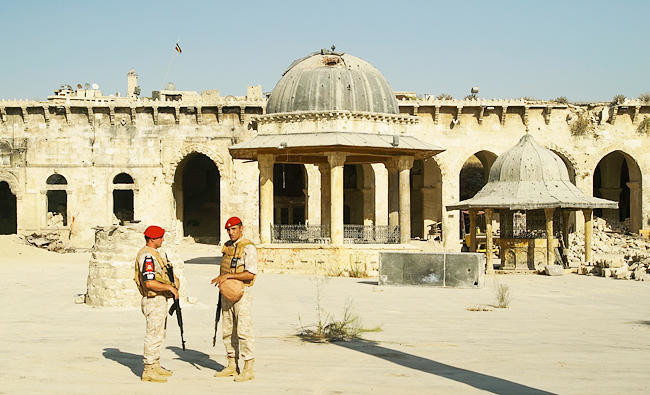
Iran prepares to bury late president, foreign minister and others killed in helicopter crash
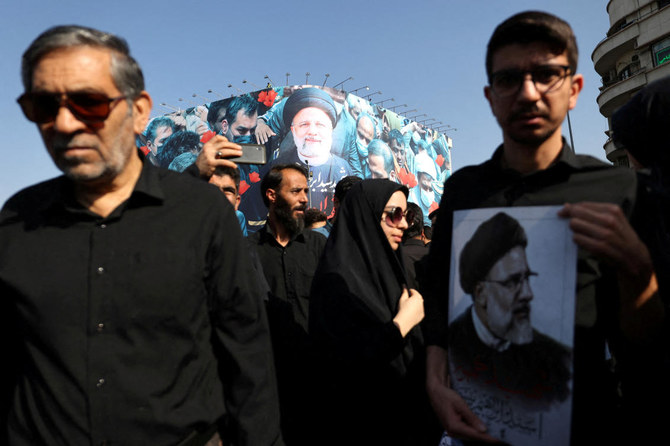
- President Ebrahim Raisi’s burial later Thursday at the Imam Reza Shrine in Mashhad caps days of processionals through much of Iran
President Ebrahim Raisi’s burial at the Imam Reza Shrine in Mashhad caps days of processionals through much of Iran, seeking to bolster the country’s theocracy after the crash killing him, the country’s foreign minister and six others.
However, the services have not drawn the same crowd as those who gathered for services for Revolutionary Guard Gen. Qassem Soleimani in 2020, slain by a US drone strike in Baghdad.
It’s a potential sign of the public’s feelings about Raisi’s presidency that saw the government harshly crack down on all dissent during protests over the 2022 death of Mahsa Amini, detained for allegedly not wearing her mandatory headscarf to authorities’ liking.
That crackdown, as well as Iran’s struggling economy, have gone unmentioned in the hours of coverage provided by state television and in newspapers. Also never discussed was Raisi’s involved in the mass execution of an estimated 5,000 dissidents at the end of the Iran-Iraq war.
Prosecutors have warned people against showing any public signs of celebrating Raisi’s death and a heavy security force presence has been seen in Tehran since the crash.
Thursday morning, thousands in black gathered along a main boulevard in the city of Birjand, Raisi’s hometown in Iran’s South Khorasan province along the Afghan border. A semitruck bore his casket down the street, with mourners reached out to touch it and tossing scarves and other items to be placed against it for a blessing. A sign on the truck read: “This is the shrine.”
Later, Raisi will be buried at the Imam Reza Shrine, where Shiite Islam’s 8th imam is buried. The region long has been associated with Shiite pilgrimmage. A hadith attributed to Islam’s Prophet Muhammad says anyone with sorrow or sin will be relieved through visiting there.
In 2016, Supreme Leader Ayatollah Khamenei appointed Raisi to run the Imam Reza charity foundation, which manages a vast conglomerate of businesses and endowments in Iran, as well as oversees the shrine. It is one of many bonyads, or charitable foundations, fueled by donations or assets seized after Iran’s 1979 Islamic Revolution.
These foundations offer no public accounting of their spending and answer only to Iran’s supreme leader. The Imam Reza charity, known as “Astan-e Quds-e Razavi” in Farsi, is believed to be one of the biggest in the country. Analysts estimate its worth at tens of billions of dollars as it owns almost half the land in Mashhad, Iran’s second-largest city.
Raisi will be the first top politician in the country to be buried at the shrine, which represents a major honor for the cleric.
The death of Raisi, Foreign Minister Hossein Amirabdollahian and six others in the crash on Sunday comes at a politically sensitive moment for Iran, both at home and abroad.
Raisi, who was 63, had been discussed as a possible successor to Iran’s supreme leader, the 85-year-old Khamenei. None of Iran’s living past presidents — other than Khamenei, who was president from 1981 until 1989 — could be seen in state television footage of Wednesday’s prayers. The authorities gave no explanation for their apparent absence.
Iran has set June 28 as the next presidential election. For now, there’s no clear favorite for the position among Iran’s political elite — particularly no one who is a Shiite cleric, like Raisi. Acting President Mohammad Mokhber, a relatively unknown first vice president until Sunday’s crash, has stepped into his role and even attended a meeting between Khamenei and Hamas leader Ismail Haniyeh on Wednesday.
Families forum release video of Israeli women troops being seized on Oct 7
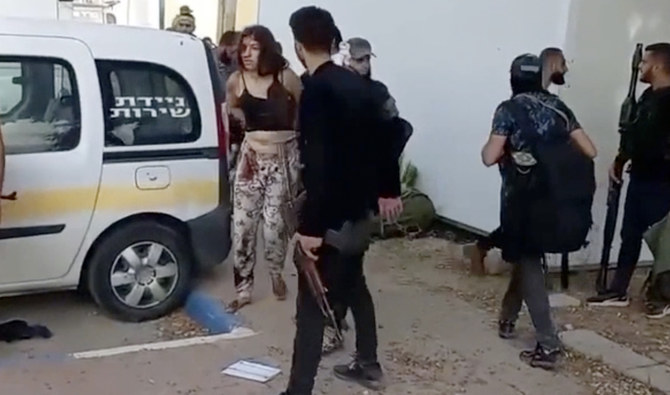
- The three-minute clip showed the women sitting on the ground, some with blood on their faces, with their hands tied
- The footage was taken from a two-hour video filmed on a body camera by Hamas militants
JERUSALEM: An Israeli campaign group on Wednesday released footage of five Israeli female soldiers being captured by Palestinian militants from a military base during Hamas’s October 7 attack, after their families gave permission.
The three-minute clip showed the women sitting on the ground, some with blood on their faces, with their hands tied following their capture from the Nahal Oz base in southern Israel.
The footage was taken from a two-hour video filmed on a body camera by Hamas militants during the attack, the campaign group the Hostage and Missing Families Forum said in a statement.
“The footage reveals the violent, humiliating, and traumatising treatment the girls endured on the day of their abduction, their eyes filled with raw terror,” the forum said as it released the footage to the media for publication.
Towards the end of the clip, the women are seen being taken away by militants in a military jeep amid screams.
“It’s time to act, otherwise the blood of my sister and other hostages will be on the hands” of the Israeli authorities, Sasha Ariev, sister of one of the seized soldiers, told AFP.
“Everyone has now seen these young girls taken captive in their pyjamas... the only victory is to bring them back quickly and alive.”
After the base was stormed by Hamas militants on October 7, more than 50 Israeli soldiers were killed in the attack, 15 of whom were women.
Seven female soldiers were taken hostage and one has since been freed in an Israeli military operation, while the body of another was found and brought to Israel.
Hamas said the video footage was “manipulated” with a selection of images aimed at supporting “false allegations” to “tarnish the image of the resistance.”
Some of the soldiers were bleeding or sustained minor injuries, “but there was no physical aggression against any of them,” the Palestinian Islamist movement said in a statement.
Hamas’s unprecedented attack on October 7 resulted in the deaths of more than 1,170 people, mostly civilians, according to an AFP tally of Israeli official figures.
Militants also took 252 hostages, 124 of whom remain in Gaza, including 37 the army says are dead.
Israeli Prime Minister Benjamin Netanyahu has come under intense pressure from the families of the hostages to negotiate the return of their loved ones from Gaza.
Netanyahu vowed in a statement on Wednesday to continue fighting Hamas to “ensure what we have seen tonight never happens again.”
Israel’s retaliatory offensive has killed at least 35,709 people in Gaza, most of them civilians, according to the Hamas-run territory’s health ministry.
The Israeli military says 287 soldiers have been killed in Gaza since the start of the ground offensive on October 27.
Bomb kills five civilians from same family in Iraq’s Salahuddin province, two security sources say
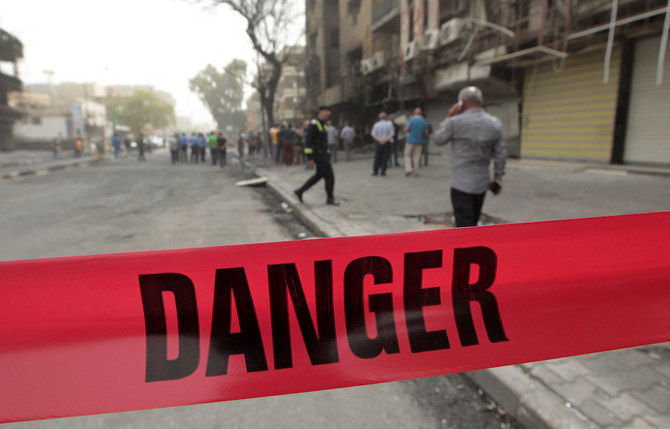
A roadside bomb killed five civilians from the same family in Iraq’s Salahuddin province after detonating on a vehicle transporting them, two security sources said on Wednesday.
How armed groups are using fire to displace communities in Sudan’s troubled Darfur
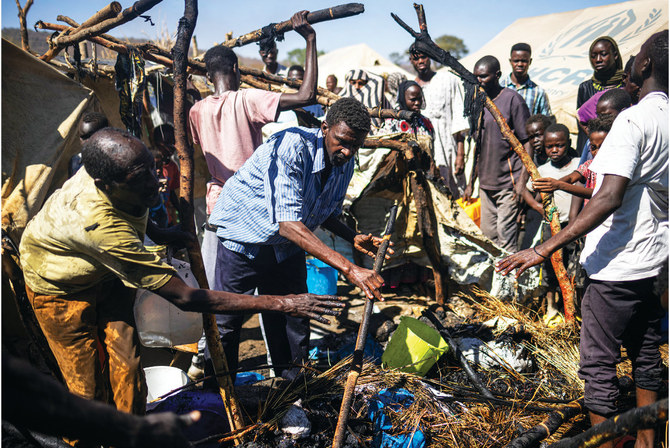
- Satellite images show fires have ravaged settlements surrounding the westen city of Al-Fashir in recent weeks
- UN officials have accused combatants of setting fires to sow fear and ethnically cleanse tribal communities
LONDON: Fires in western Sudan, reportedly set by militiamen, have torn through hundreds of settlements in recent months, forcing thousands of civilians to flee their homes, while those who remain live in constant fear of attack.
A recent report by the Sudan Witness project of the UK-based Centre for Information Resilience found that a total of 201 villages and settlements in western Sudan had suffered fire damage since the start of the war.
April was the worst month on record, with 72 communities impacted by fires set deliberately or as a byproduct of the fighting that has raged between the Sudanese Armed Forces and the paramilitary Rapid Support Forces since April 2023.

The report, published on May 12, highlighted a surge in the number of fires to the north and west of the city of Al-Fashir in North Darfur State, which has seen escalating violence.
Analysts believe the fires are being set deliberately to displace the population of these areas.
“When we see reports of fighting or airstrikes coinciding with clusters of fires, it indicates that fire is being used indiscriminately as a weapon of war,” Anouk Theunissen, project director at Sudan Witness, stated in the report.
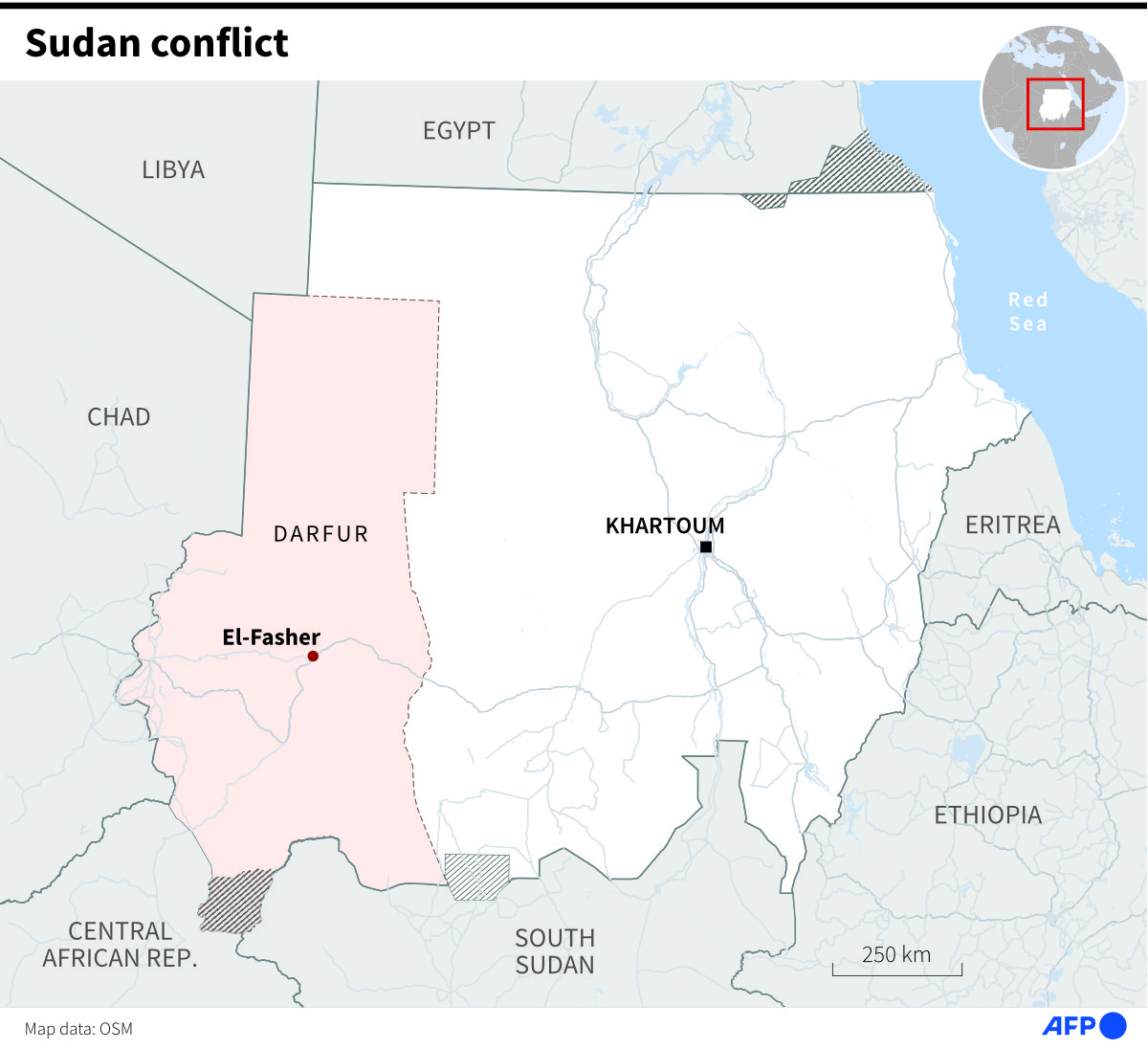
He warned that “the trend is worsening and continues to lead to the mass displacement of Sudanese people.”
Sudan Witness investigators pieced together open-source NASA satellite imagery and social media content to map the pattern of fires since the onset of the Sudanese conflict more than a year ago. They primarily focused on Kordofan and the troubled Darfur region.
Until the end of April 2024, at least 311 individual fires broke out in the two provinces. The assessment also revealed that 51 settlements of various sizes have suffered multiple fires since the war began.

Expressing horror at the violence unfolding in Al-Fashir, UN human rights chief Volker Turk described the situation in the city as “hell on Earth” and renewed calls for the warring parties to end the hostilities.
Ravina Shamdasani, spokesperson for the Office of the UN High Commissioner for Human Rights, said at least 58 civilians had been reported killed and 213 others injured in Al-Fashir “since fighting dramatically escalated.”
INNUMBERS
• 201 Villages and settlements in western Sudan which have suffered fire damage since April last year.
• 311 Individual fires that had broken out until the end of April 2024 in Kordofan and Darfur.
During a press briefing in Geneva on May 17, she said “these figures are certainly an underestimate,” warning that the fighting between the two parties and their allied armed militias was taking “a deeply devastating toll on civilians.”
She said Turk had held phone conversations with both sides to urge them to cease hostilities, to ensure the protection of civilians, and to warn them that fighting in Al-Fashir “would have a catastrophic impact on civilians and deepen intercommunal conflict with disastrous humanitarian consequences.”
Al-Fashir, the capital of North Darfur, has been under siege by the RSF for several months, trapping an estimated 1.8 million residents and internally displaced people, according to UN figures.
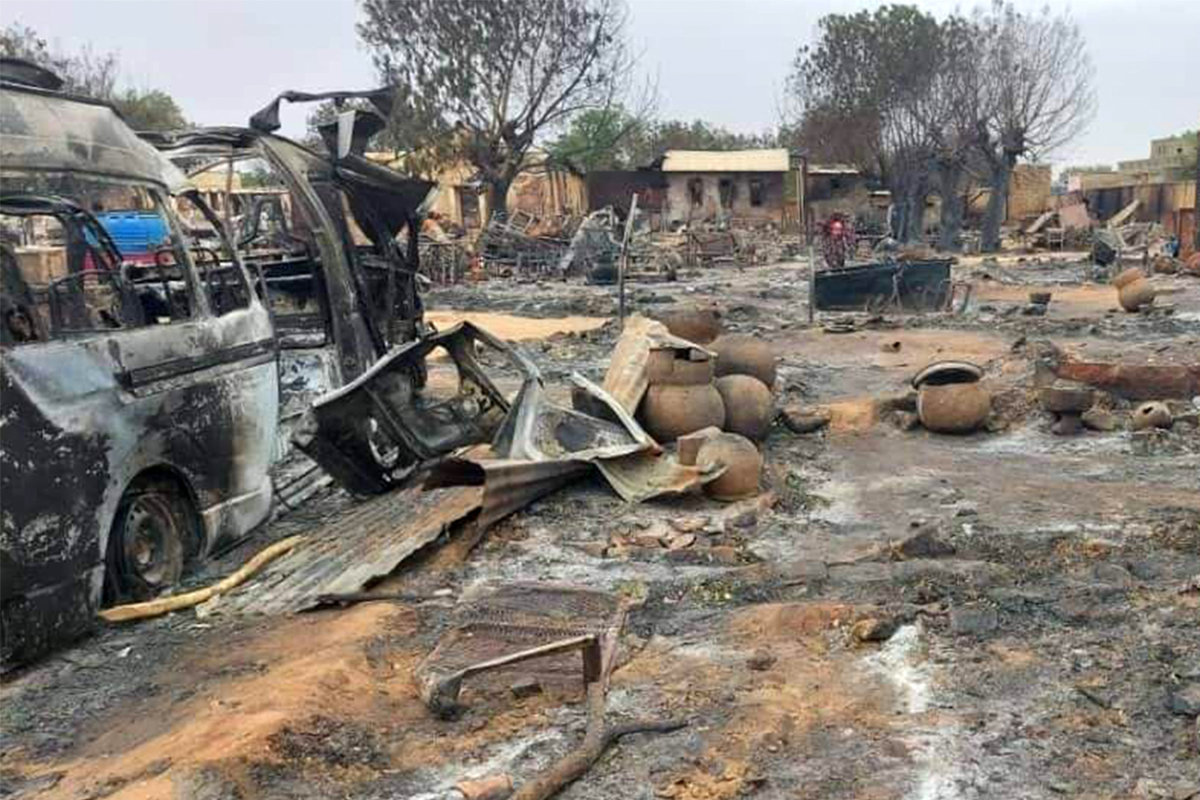
Anticipating the worst, Linda Thomas-Greenfield, the US ambassador to the UN, warned in late April of a potentially imminent massacre in Al-Fashir.
“As I’ve said before, history is repeating itself in Darfur in the worst possible way. And an attack on Al-Fashir would be a disaster on top of a disaster,” she said during the UN Security Council Stakeout on the Situation in Sudan.
“It would put 500,000 internally displaced persons at risk, people who traveled from across Darfur to seek refuge. And that’s on top of the 2 million Sudanese who call Al-Fashir home.”
Cut off from the outside world, the people in Al-Fashir are now at imminent risk of famine. Yet the UN says it has received just 12 percent of the $2.7 billion it had requested from donors to head off mass starvation.
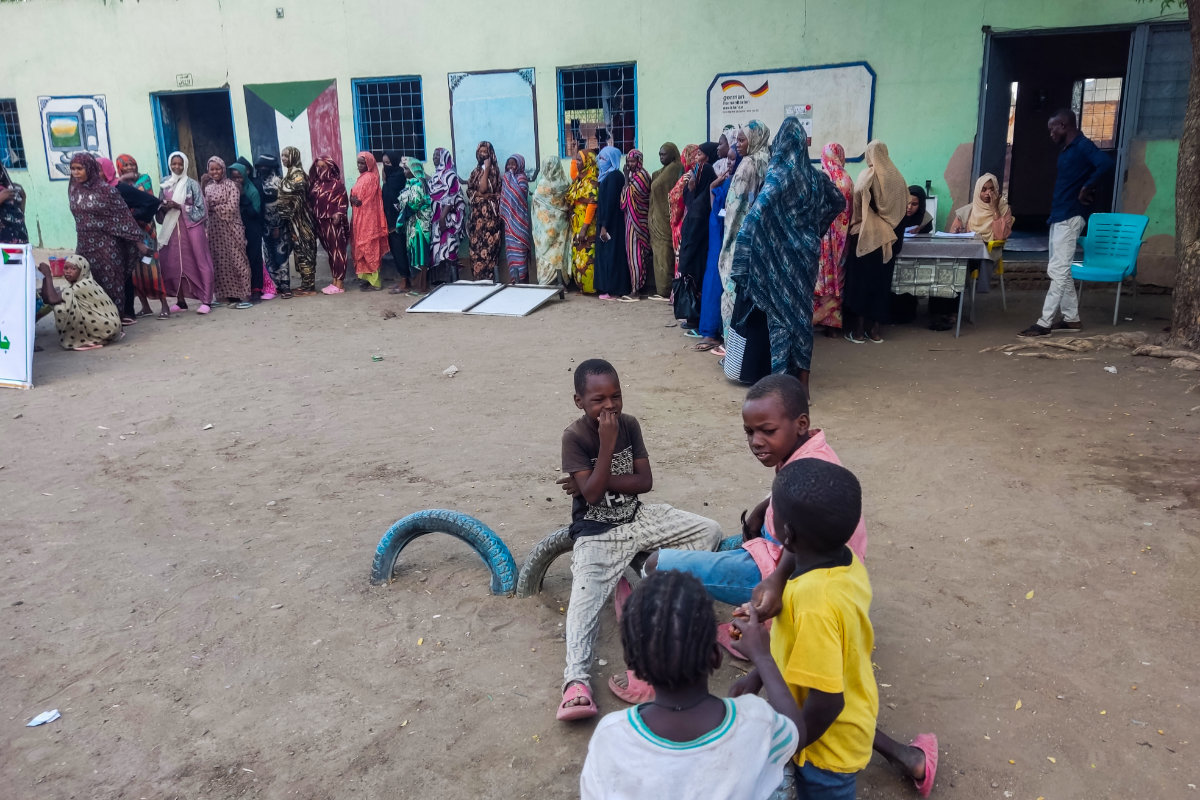
Since the outbreak of conflict in Sudan last year, at least 15,500 people have been killed, more than 33,000 injured, and some 6.8 million displaced inside the country, according to UN figures.
“Half of the population, 25 million people, need humanitarian aid,” Jens Laerke, a spokesperson for the Office for the Coordination of Humanitarian Affairs, told AFP news agency.
“Famine is closing in. Diseases are closing in. The fighting is closing in on civilians, especially in Darfur.”
Health infrastructure in Al-Fashir has also not been spared. On May 19, the RSF launched a barrage of artillery at the city’s Women’s, Maternity and Neonatal Hospital, injuring nine people and causing significant damage to the facility, according to the Sudan Tribune.
A recent report by the New York-based monitor Human Rights Watch accused the RSF and its allied militias of committing “crimes against humanity” and “genocide” in West Darfur.
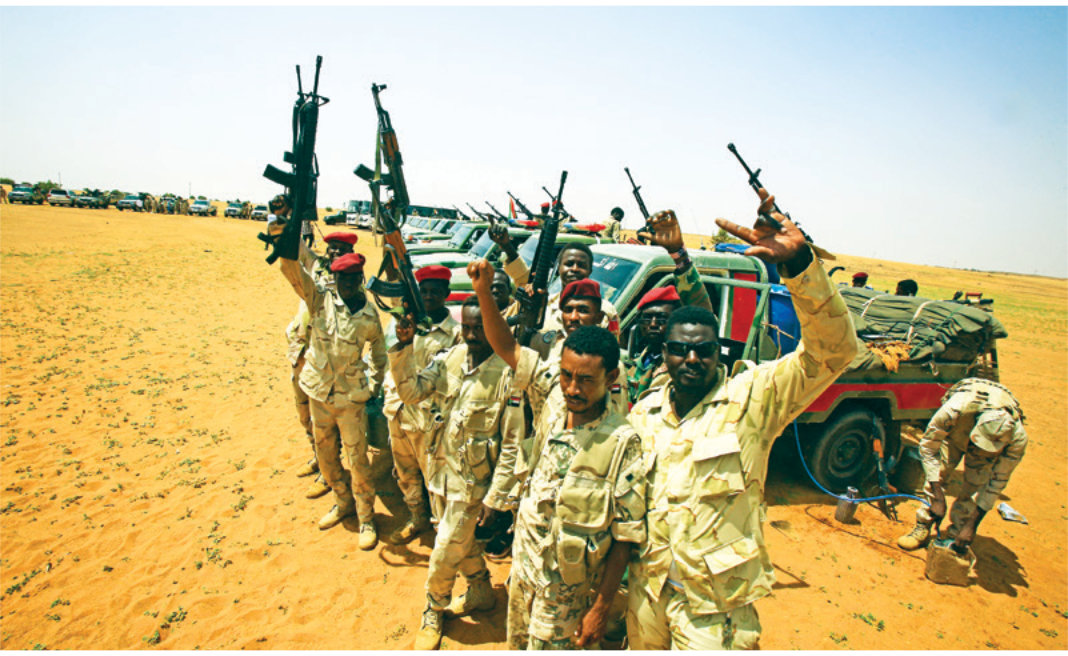
The report, published May 16, emphasized that the hostilities in El-Geneina alone from April to November last year left thousands dead and forcibly displaced hundreds of thousands more.
The RSF has said it is not involved in what it describes as a “tribal conflict” in Darfur.
Even the use of fire as a weapon of war is nothing new in Sudan. The Sudan Witness project published a map in October last year plotting multiple fire incidents in the country since the start of the conflict.
The map revealed that the highest concentration of fire incidents was in the southwest of the country, with 68 villages in the Masalit-majority Darfur region having been set ablaze by the RSF and its allied militias, according to media reports.
Masalit tribes were among the rebel groups that fought the Sudanese government and the Janjaweed militia — the forerunner of the RSF — during the war in Darfur that started in 2003, leading to reprisals and ethnic cleansing.
Andrew Mitchell, the UK’s minister for development and Africa, warned in December that the latest reported targeting and mass displacement of the Masalit community in Darfur “bears all the hallmarks of ethnic cleansing.”
Alice Nderitu, the UN special adviser on the prevention of genocide, warned on Tuesday that Sudan is exhibiting all the signs that genocide could — and may already — be taking place.
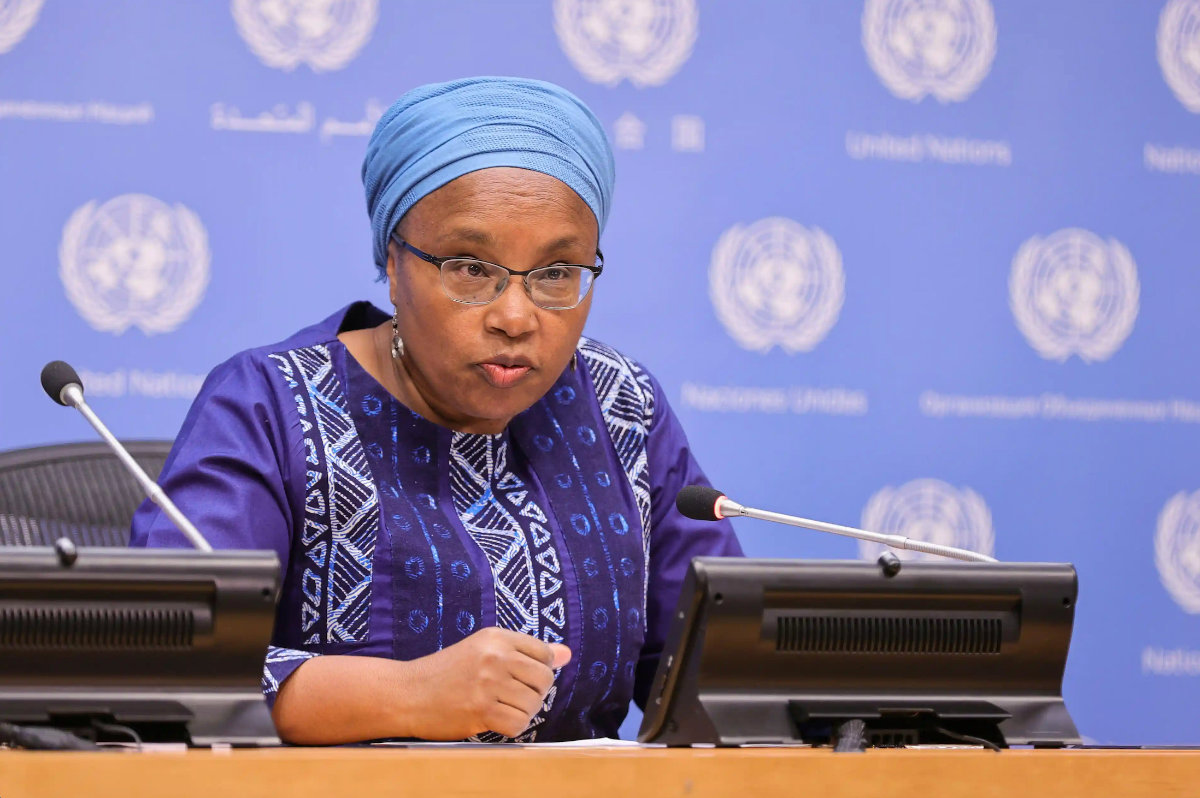
“The protection of civilians in Sudan cannot wait,” Nderitu told a meeting of the UN Security Council. “The risk of genocide exists in Sudan. It is real and it is growing, every single day.
“In Darfur and Al-Fashir, civilians are being attacked and killed because of the color of their skin, because of their ethnicity, because of who they are. They are also targeted with hate speech and with direct incitement to violence.”
Nderitu said the burning and destruction of villages and settlements around Al-Fashir is intended to cause displacement and fear, rather than accomplish any specific military objectives.
“It is imperative that all possible actions aimed at the protection of innocent civilian populations, in Al-Fashir as in the entire territory of Sudan, are expedited,” she said. “It is urgent to stop ethnically motivated violence.”
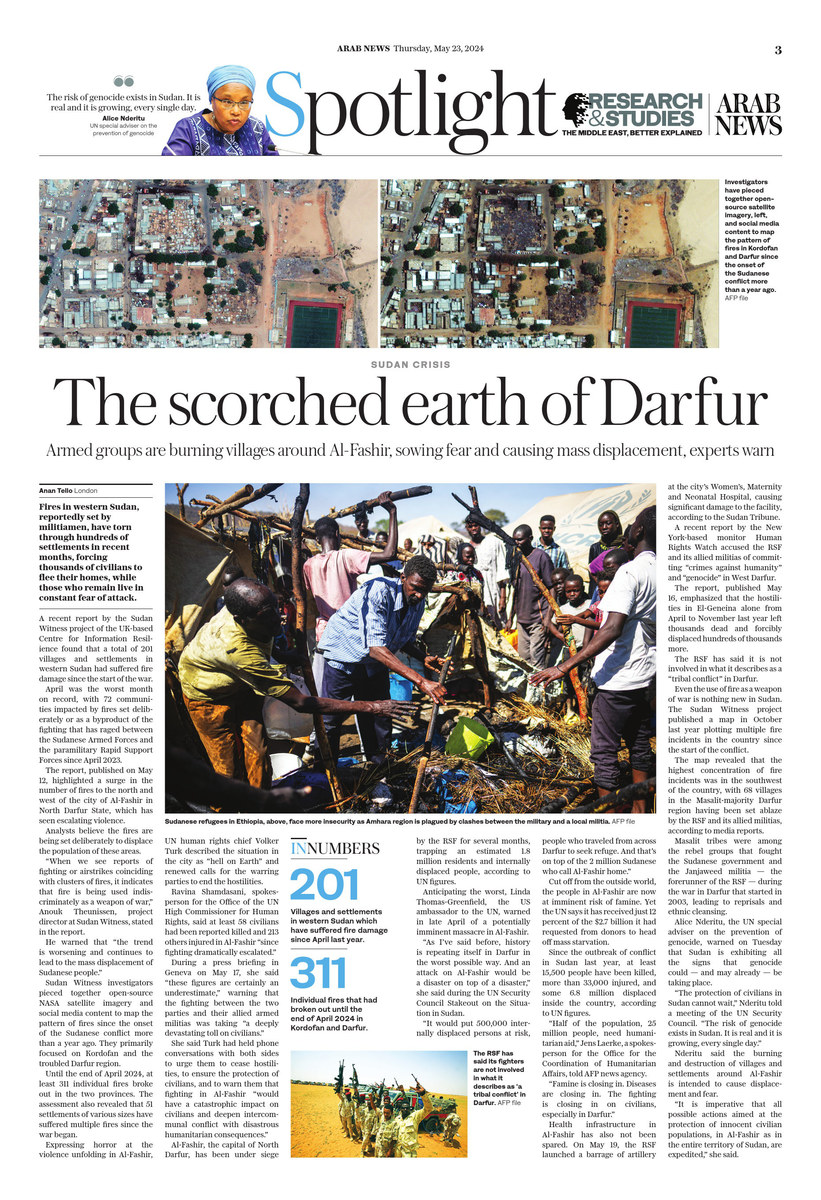
Arab League welcomes announcement by Spain, Ireland, Norway to recognize Palestine
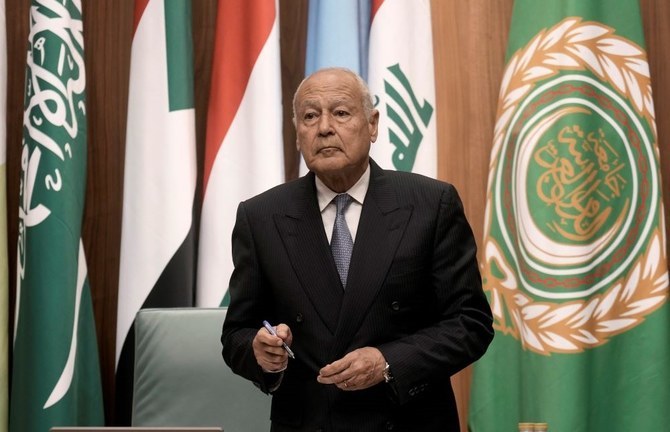
- Ahmed Aboul Gheit, Arab League secretary-general, said that this “significant move underscores a genuine commitment to the two-state solution”
- He urged countries yet to recognize Palestine to reassess their positions and align themselves with the course of history
CAIRO: The Arab League has welcomed the official recognition of the state of Palestine by Spain, Ireland, and Norway.
The prime ministers of the three countries said on Wednesday they were formally going to recognize Palestine as a state as of May 28.
Ahmed Aboul Gheit, Arab League secretary-general, said that this “significant move underscores a genuine commitment to the two-state solution and reflects the sincere desire of these nations to safeguard it from those seeking to undermine or eradicate it.”
Gamal Roshdy, Aboul Gheit’s spokesman, said that “this important development follows the recent recognitions by Barbados, Jamaica, Trinidad and Tobago, and the Bahamas. These additions bring the total number of countries recognizing the Palestinian state to approximately 147, aligning with the overwhelming global consensus.”
Roshdy said such recognition “is a fundamental aspect of the state's standing in international law.
This step “embodies a principled political, moral, and legal stance. It marks a significant milestone toward realizing the Palestinian state based on the 1967 borders, with East Jerusalem as its capital,” he quoted Abdul Gheit as saying.
Aboul Gheit said that “recognition conveys a clear message to Palestinians: the world stands resolute in defending their right to self-determination and the establishment of an independent state.”
He stressed that “amid the current hardships, a political pathway leading to the realization of the Palestinian state is inevitable.”
Aboul Gheit urged countries yet to recognize Palestine to reassess their positions and align themselves with the course of history.
He highlighted that recognizing Palestine signifies a genuine commitment to the two-state solution, diverging from violent approaches, and fostering peace and security across the region.



